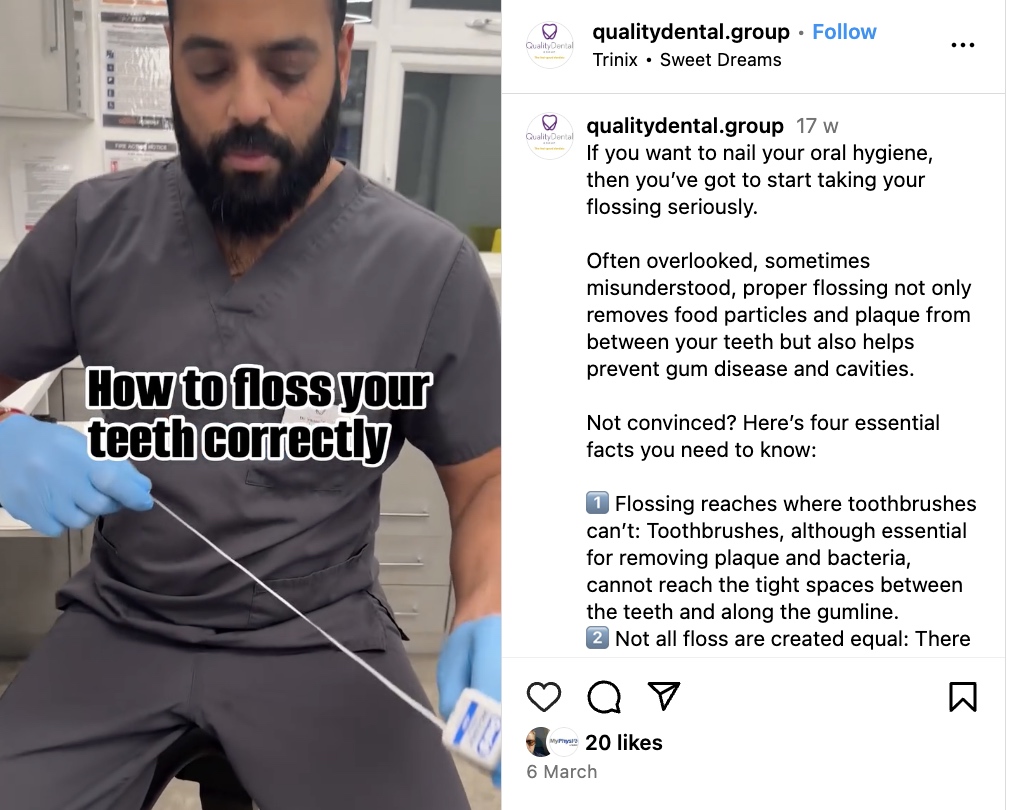Flossing: Top Tips and Common Mistakes to Avoid
10 July 2024

When it comes to optimising your oral health, brushing alone is not enough. Flossing is a crucial component of a comprehensive oral hygiene routine. In our latest blog, we’ll delve into the importance of flossing, backed by what the research says, provide top tips for effective flossing and highlight common mistakes to avoid. Let’s get to it.
Why Flossing Matters
Flossing is essential for removing food particles and plaque from areas that a toothbrush cannot reach. Think the gaps between your teeth and along your gumline. Neglecting to floss can lead to the accumulation of plaque, which in turn can cause gum disease, cavities, and bad breath.
Recent research published in the Journal of Dental Research has shown that individuals who floss daily have a significantly lower risk of gum disease and tooth decay. The study highlighted that flossing reduces the number of harmful bacteria in the mouth, contributing to overall better oral health.
Top Tips for Effective Flossing
- Use the Right Length: Cut a piece of floss about 18 inches long. This length allows you to use a fresh section of floss for each tooth, preventing the spread of bacteria.
- Be Gentle: Avoid snapping the floss into your gums. Gently guide the floss between your teeth using a back-and-forth motion.
- Follow the Curve: Curve the floss around each tooth in a C-shape and slide it up and down against the tooth surface and under the gumline.
- Use Fresh Sections: As you move from tooth to tooth, use a clean section of floss to avoid reinserting bacteria.
- Consider Alternatives: If traditional floss is difficult to use, consider alternatives like floss picks, water flossers, or interdental brushes.
Want to know how to floss correctly? Click the video below!

Common Mistakes to Avoid
- Going Too Hard: Being too aggressive can damage your gums and lead to bleeding. Floss gently to avoid injury.
- Being Inconsistent: Flossing sporadically won’t yield the same benefits as daily flossing. Make it a daily habit for the best results.
- Skipping Back Teeth: Don’t neglect your back teeth. They are just as susceptible to plaque and cavities as your front teeth.
- Using the Same Section: Using the same section of floss for multiple teeth can spread bacteria. Always use a fresh segment for each tooth.
Did You Know?
- Flossing Can Improve Your Breath: Removing trapped food particles and bacteria reduces bad breath.
- Flossing Reduces Heart Disease Risk: Studies suggest that gum disease is linked to heart disease. Flossing helps prevent gum disease, potentially reducing this risk.
- It’s Never Too Late: Even if you haven’t flossed regularly in the past, starting now can still significantly improve your oral health.
Conclusion
Incorporating flossing into your daily oral hygiene routine is a simple yet powerful way to maintain healthy teeth and gums. By following the top tips provided and avoiding common mistakes, you can ensure that your flossing routine is both effective and gentle. Remember, a little effort each day can lead to a lifetime of healthy smiles.
For more dental health tips and information, stay tuned to our blog and make flossing a non-negotiable part of your daily routine. Your teeth and gums will thank you!















